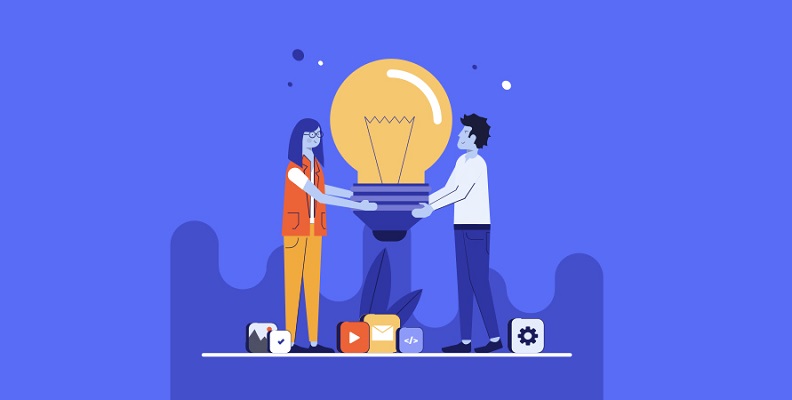Growing business revenue is every entrepreneur’s primary goal, right? Most likely, it’s yours too. Here’s how Sales Funnels can help you get the most of your website selling potential.
Do you feel like you’ve done everything to improve conversion rate, but people are still not buying enough? You know you have followed every best practice step-by-step, from having call-to-actions and enough white space on your website. You’ve also created relevant content and broken it so that it is easy to scan, and you most likely improved your offers to be irresistible. Yet, you are not seeing the results you were hoping for.
Don’t worry, you didn’t do anything wrong. Yet, there’s more to conversion optimization than just design and copywriting. And we’re going to help you make sure that prospects actually click and convert. What must you do? Build sales funnels!
Sales funnels are one of the key concepts in digital marketing. They help illustrate the path your prospects take when they enter your website, helping you generate more sales. How? By helping you know how to treat your prospects better by anticipating their needs. And, when you do that, they reward you with their wallets.
So, it would be best if you used sales funnels to anticipate potential customer’s needs and wants and deliver them even before they ask for them.
What are the sales funnels?
First things first, let’s make sure that we’re on the same page on what sales funnels are.
Let’s put it in a simple way: when your visitors access your business website, you want them to take certain actions such as purchasing, signing up, or filling out a form.
Now, what that happens, and a visitor takes the action you wanted them to, that’s a conversion. The prospect turns from a visitor that simply browses your website into a visitor that converts by taking the step you wanted them to. Long story short, a sales funnel represents the set of actions the visitor has gone through before reaching conversion.
In other words, sales funnels are basically the path that includes all the steps that lead to conversion. As the name suggests, the entire process is like a funnel. At the beginning of the sales process, all visitors take the first step: they enter your website. Yet, as they move forward to the next steps, some visitors drop out, narrowing the size of possible conversions.
By building sales funnels, you are basically creating a step-by-step path that guides your visitors through the entire sales process. This way, you make sure that they don’t get confused or lost and drop out. Drip Digital’s detailed article on sales funnels gives more insight into building funnels that help guide your prospects.
How can sales funnels help your business?
For marketers, marketing funnels represent the visualization they need to understand the process of turning a website’s visitor into customers, all from a marketing and sales perspective. Using this visualization, marketers create a broad net that helps them capture as many leads as possible and take them through the entire sales process with step-by-step guidance.
Now, there’s no such thing as the one-size-fits-all version when it comes to sales funnels. The funnels can depend on each business’s goals and even target audience. Thus, some versions of funnels can have more stages they take visitors through, while others only involve a few steps.
What’s more, every funnel can have different names for its stages and can involve different actions taken by both the business and its prospects for each stage. However, every sales funnel has the same main goal: to turn leads into customers, increasing sales and revenue.
Here’s an example of the most common marketing funnel. It would include a set of steps, such as:

Awareness– this is the first step in the entire sales process. It is the stage when businesses conduct marketing campaigns and customer research. At this stage, businesses organize events and conduct marketing campaigns such as social media marketing, advertisement, or direct email campaigns.
Interest– this is the funnel’s second stage that aims to raise interest in leads through engagement. At this stage, businesses take actions such as email marketing campaigns and creating targeted content that focuses on engaging prospects and building interest in them.
Consideration– at the third stage of the sales funnel, marketers conduct email campaigns and case studies. They also try to attract lead by offering free trials, providing product information, and special offers.
Intent– Here, marketers focus on identifying those prospects that show interest in buying a business’s product. Prospects prove their intent by disclosing their intent in surveys, after a product demo, or by actually adding the product in their shopping car on the business’s website.
Evaluation– the evaluation stage is synonymous to decision-making. In other words, this is the step of the process when prospects decide if they buy the product and turn into conversion or not. Business-wise, at this stage, marketers and salespeople join forces to convince the prospects that buying the product is the right choice.
Purchase– The final step represents the stage when the prospects purchase the products and turn into customers.
Now, considering this simple and common sale funnel version, let’s analyze how it actually helps businesses increase sales and grow revenue. The sales funnel becomes a detailed visualization of the customer journey, from the first stage, awareness, to the last one, which is purchase or conversion.
Now, using the visualization of the customer journey, marketers and businesses can identify their weaknesses in the sales process. In other words, they can see at which stage they are losing customers so that they can improve the approach to capture more leads and take them through the entire process. What’s more, by identifying the steps that confuse customers and make them drop out and improving them, your business will also improve the customer experience it offers. And, we all know that positive customer experience often leads to referrals that will fuel the first stage of the sales funnel, fueling the entire process to begin again and again.








